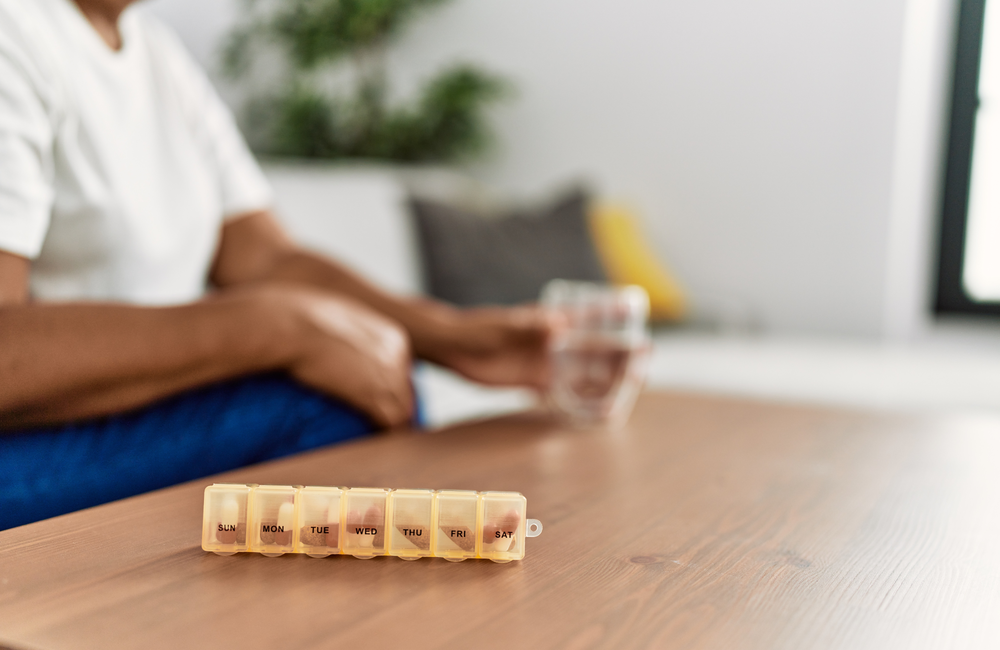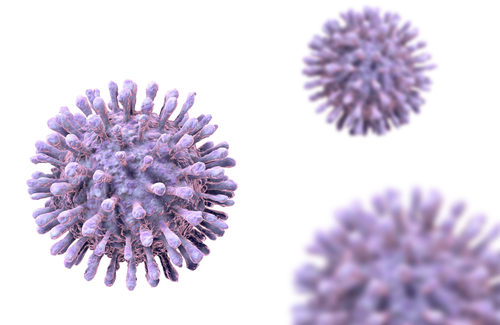
Although integrase inhibitors such as dolutegravir are recommended for the treatment of HIV-2, there is little clinical data showing their effectiveness. In a small Portuguese cohort, dolutegravir combined with two other drugs suppressed HIV-2 viral load and maintained undetectable status after one year. In their paper published in the journal of Clinical Infectious Diseases, the authors conclude dolutegravir-based triple therapy is a safe and effective initial therapy option for the treatment of HIV-2.
Although often thought as a slightly different version of HIV-1 (the main type of HIV responsible for the global pandemic), HIV-2 is only a ‘cousin’ to HIV-1 – in fact, there are considerable differences between the two viruses. Owing to these differences, HIV-2 causes a milder disease that progresses much slower than HIV-1 and the viral load is usually low or even undetectable. However, HIV-2 is usually more difficult to treat as most antiretroviral drugs have been designed to treat HIV-1 and may not be as effective against HIV-2.
There are fewer than two million people with HIV-2 (including some who have both HIV-2 and HIV-1 simultaneously) as opposed to approximately 40 million people with HIV-1. In addition, HIV-2 is found predominantly in west Africa in contrast to the global spread of HIV-1. These differences have naturally put the fight against HIV-1 in the foreground, including drug development, at the expense of HIV-2.
Currently, the British HIV-Association (BHIVA) recommends a combination of an integrase inhibitor (preferably dolutegravir) with two NRTIs (preferably emtricitabine and tenofovir) as the preferred initial treatment for people with HIV-2. Alternatively, the integrase inhibitor can be replaced by a protease inhibitor (preferably darunavir). However, as the focus has always been mainly on HIV-1, there are few studies looking at the efficacy of these treatments for HIV-2. This is where this study is important; although small, it provides clinical evidence for the effectiveness of dolutegravir-based triple therapy in people with HIV-2.
The study
The goal of the Portuguese investigators was to further test and confirm the efficacy and safety of dolutegravir with two different pairs of NRTIs against HIV-2. Viral suppression, an increase in CD4 count and CD4-to-CD8 ratios were set as endpoints to evaluate the success of the treatment.
The CD4-to-CD8 ratio is a standard immunological parameter that gives an overall understanding of the state of the immune system in HIV infection. It measures the number of CD4 cells (the cells the virus targets) to the number of CD8 cells (a type of immune cells that multiply in response to viral infections and inflammation). A lower ratio means an exhausted immune system.
NRTIs are a class of HIV drugs that prevent the virus from converting its genetic material into a more compatible form that can then easily and permanently lodge into our genes. The NRTI pairs they used with dolutegravir were abacavir plus lamivudine (the three already exist as a combination against HIV-1 in Triumeq) and tenofovir disoproxil plus emtricitabine (also present as a combination in Truvada).
The participants were recruited from six Portuguese HIV treatment centres between 2017 and 2019. They had to have only HIV-2, a CD4 count below 500 if undetectable or any CD4 count if they had detectable virus. The presence of HIV-1 co-infection, resistance to any of the study drugs, tuberculosis, and increased liver enzymes would lead to exclusion.
Thirty participants were enrolled in the study; 21 were put on dolutegravir plus abacavir and lamivudine and the remaining took dolutegravir with tenofovir and emtricitabine. Of these, 27 completed the study.
Most participants were women (73%) and of west African origin (88%) with a median age of 55 years. All but one acquired HIV-2 through heterosexual sex and most were in the early stages of the infection. The median CD4 count at study start was slightly below 500 and 13 participants were already undetectable before taking treatment.
Fifty-six percent had complete success with the therapy
Over half of the participants fully responded to the triple therapy with dolutegravir as they saw increases in their CD4 count and CD4-to-CD8 ratio and were virally suppressed at study end.
Immune recovery
On average, the participants’ CD4 cells increased by 96 cells after one year on treatment. Those who had started treatment with a CD4 count below 500 experienced a greater increase of an additional 143 cells. Similarly, those starting with lower CD4 counts saw a more significant increase in their CD4-to-CD8 ratio of 0.35 as opposed to those starting with higher a CD4 count, who had a small but significant increase in their ratio at 0.26 on average.
Side effects
As these regimens are already massively used for the treatment of HIV-1, their safety profile is quite well-defined and most side effects are already known. The most common side effect related to the treatment was headache with 20% reporting it; next, with 13% was nausea. Most side effects were mild to moderate, however one participant discontinued due to anxiety, sleep issues and memory impairment, possibly due to intolerance to dolutegravir.
Interestingly, there was no weight gain at study end, usually an expected effect with dolutegravir.
Conclusion
The management and treatment of HIV-2 has unique challenges. First, there is still no consensus on when treatment is best started, as the progression of the disease is slower and people live without symptoms for much longer than with HIV-1. Additionally, the decline of CD4 cells is smaller and slower, usually combined with a low or undetectable viral load. Although a few small studies suggest people with HIV-2 may benefit from earlier treatment, the jury is still out.
To further complicate matters, HIV-2 is naturally resistant to some HIV-1 drugs including all NNRTIs (efavirenz, rilpivirine, doravirine, etc.) and responds only to some protease inhibitors (such as darunavir or lopinavir). NRTIs alone do not seem to be able to suppress the virus as evidenced by a recent randomised controlled study, where a triple NRTI regimen did not show much success. Luckily, integrase inhibitors, already known for being excellent at suppressing HIV-1, seem to offer a new alternative for the treatment of HIV-2.
While this study is the first one on dolutegravir triple therapy against HIV-2 and shows excellent results, it is limited in the small number of participants, the relatively short follow-up of one year and the lack of a control arm. More and larger studies would help determine best treatment options for those with HIV-2, as well as those with HIV-2 and HIV-1 co-infection.
Pacheco P. et al. Safety and Efficacy of Triple Therapy With Dolutegravir Plus 2 Nucleoside Reverse Transcriptase Inhibitors in Treatment-Naive Human Immunodeficiency Virus Type 2 Patients: Results From a 48-Week Phase 2 Study. Clinical Infectious Diseases 77: 740–748, 2023 (open access).

